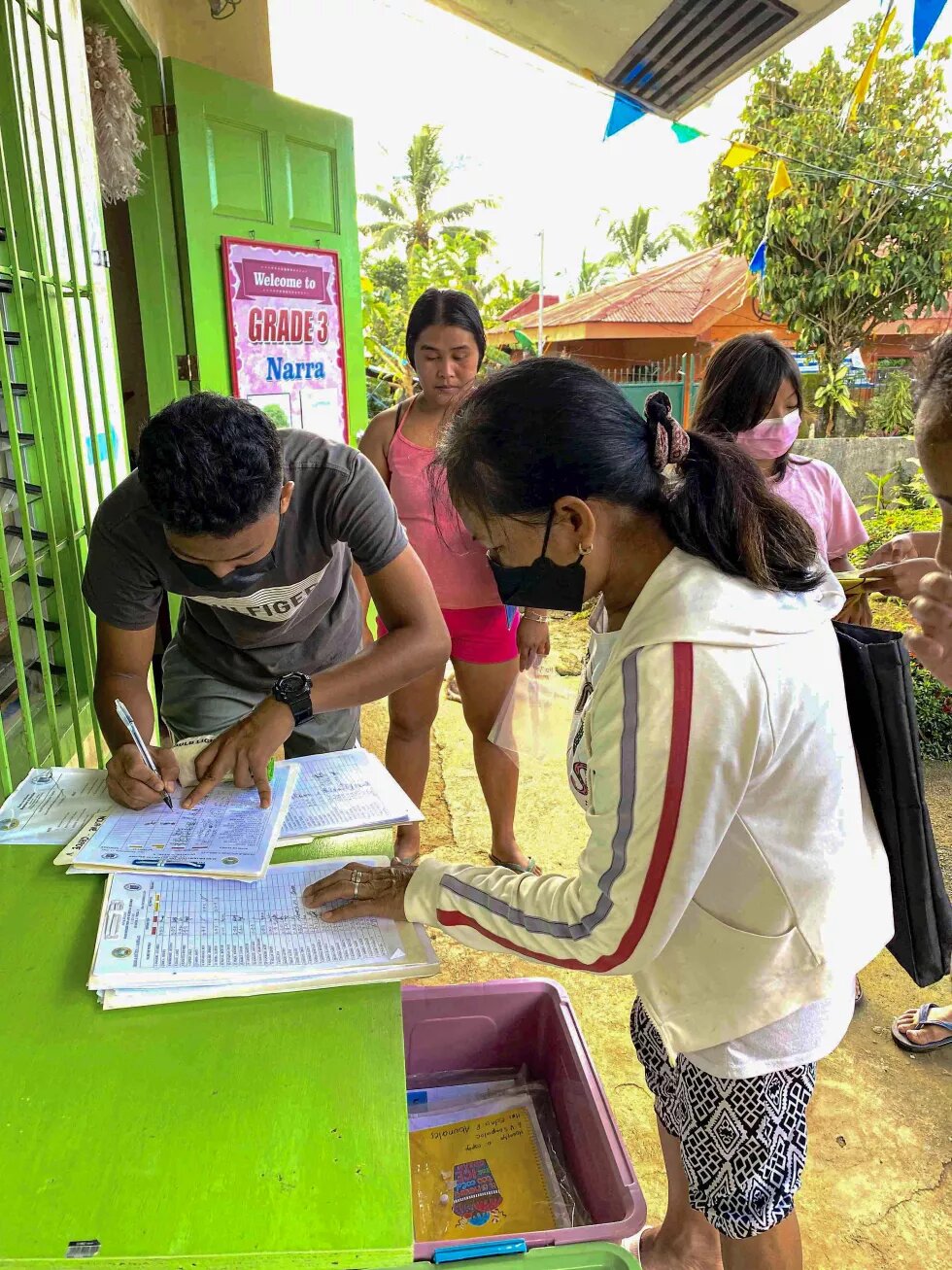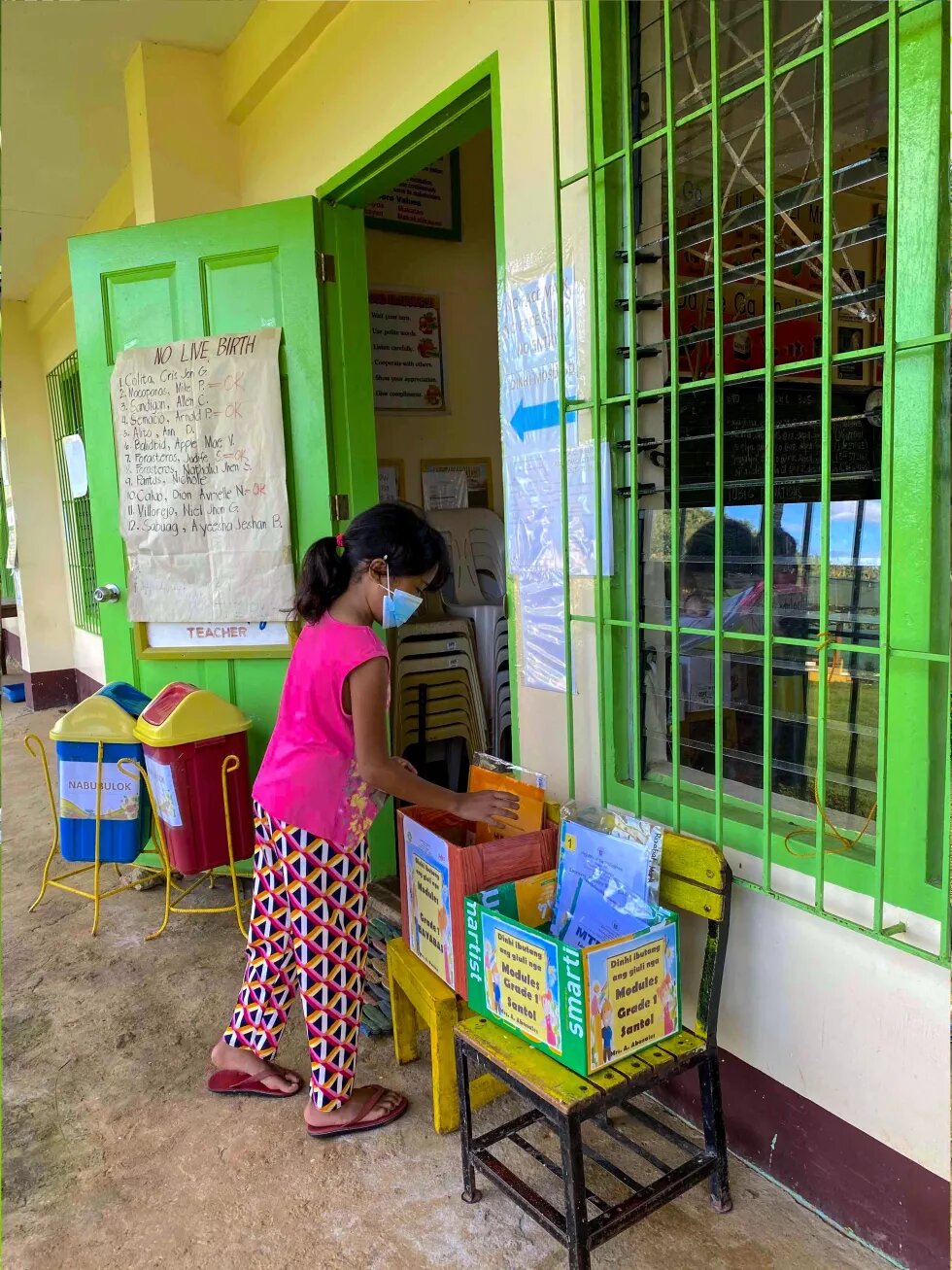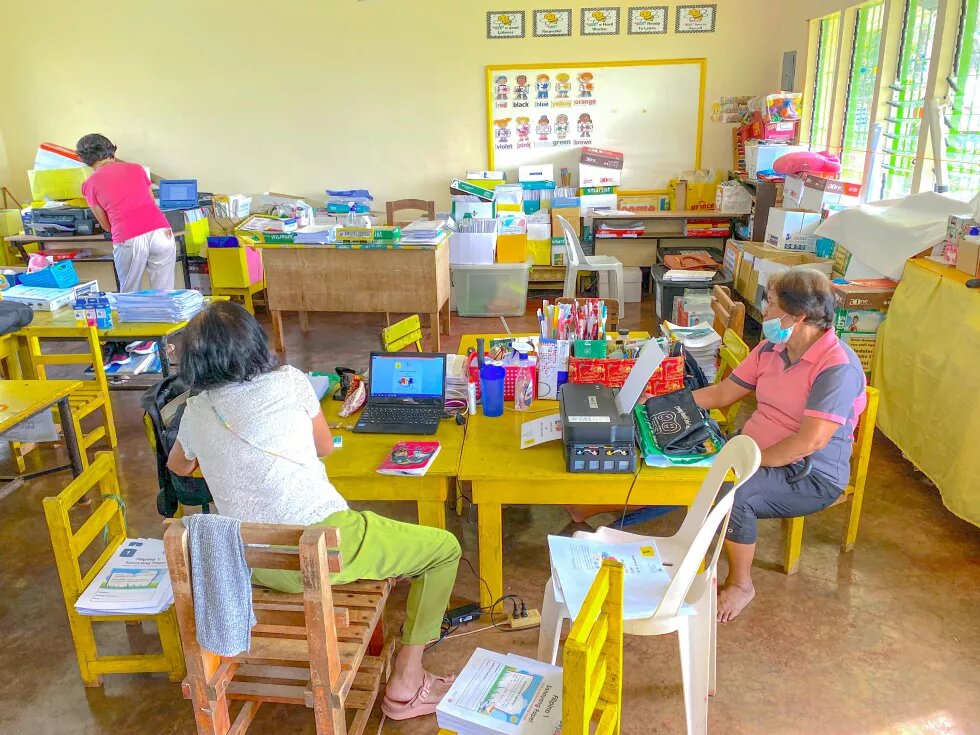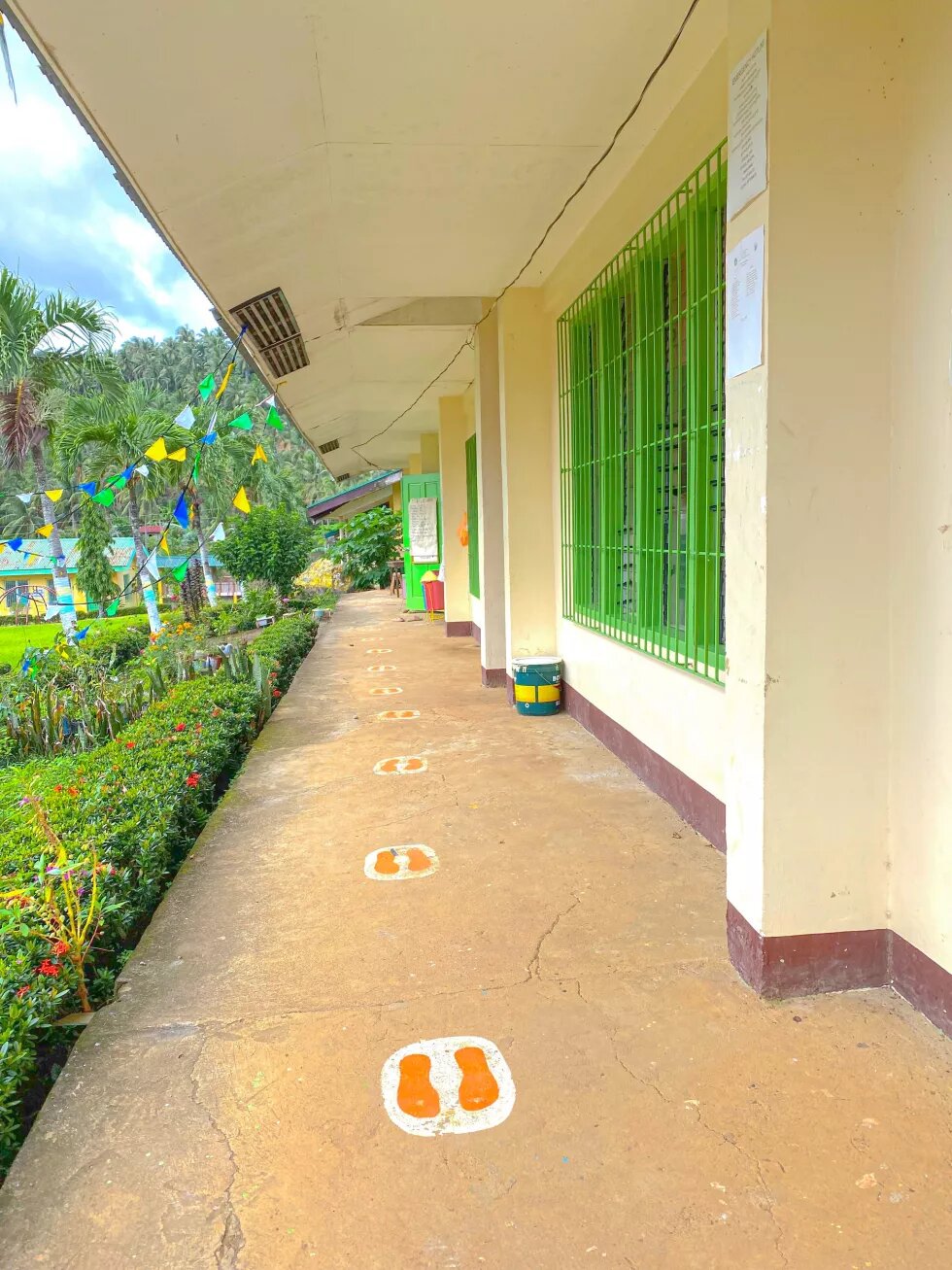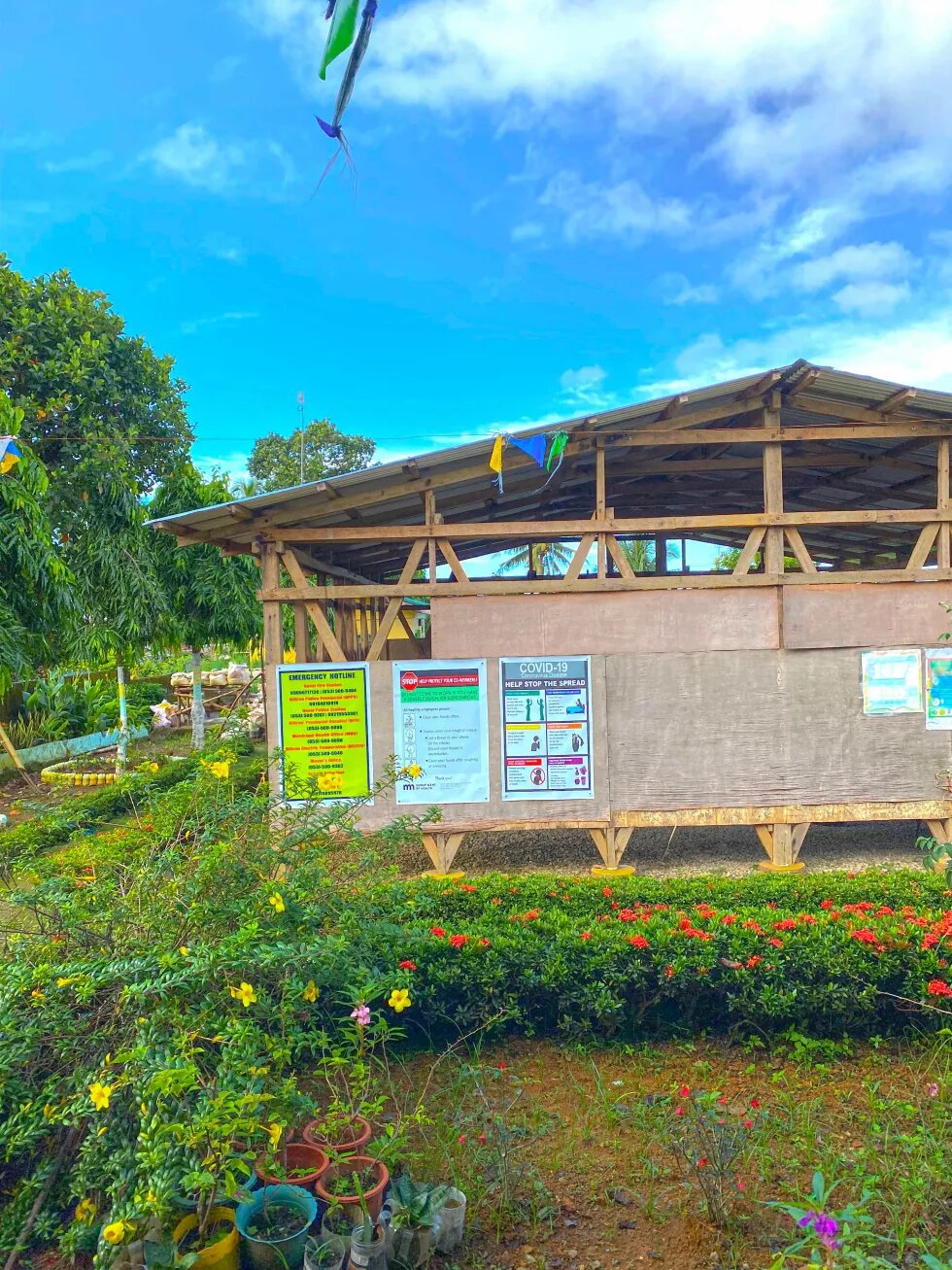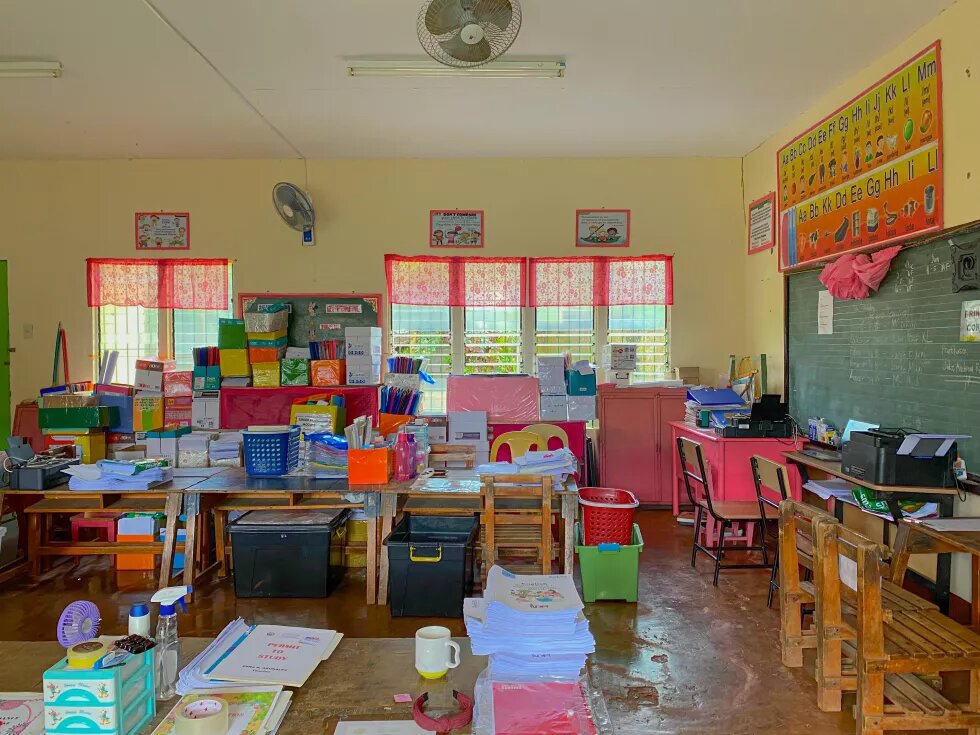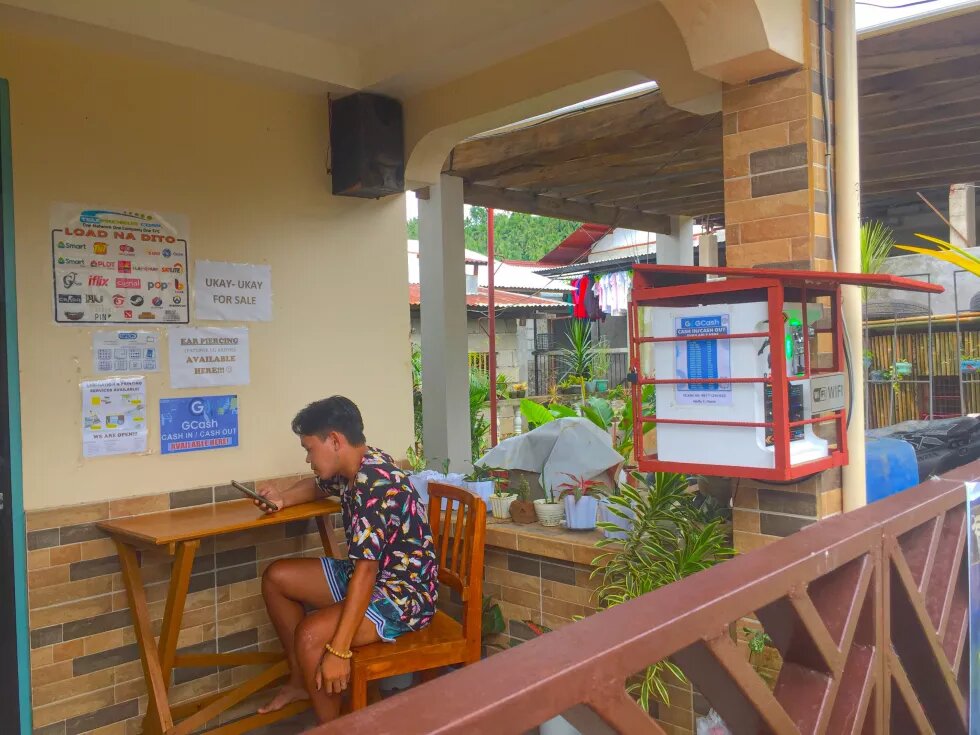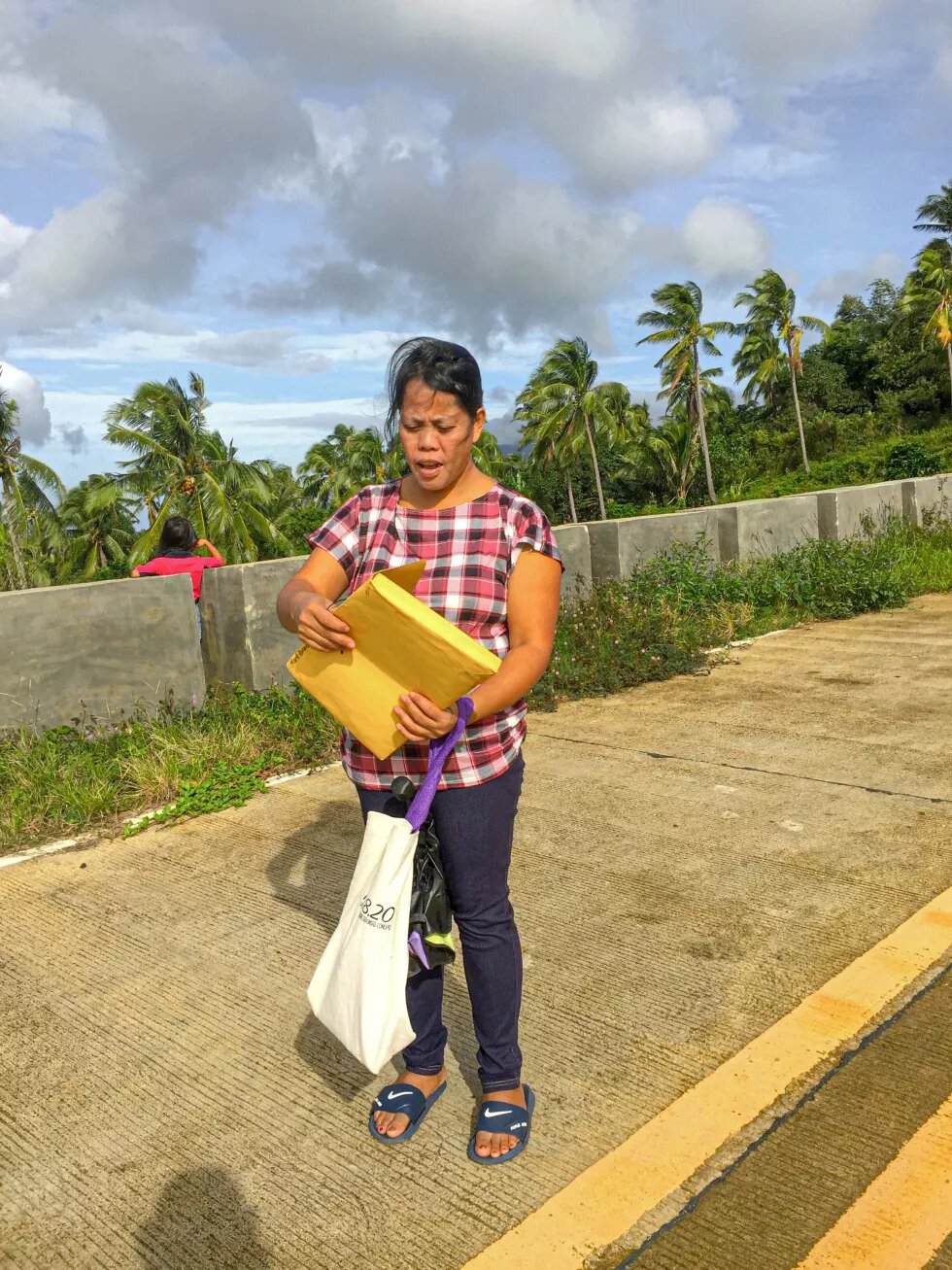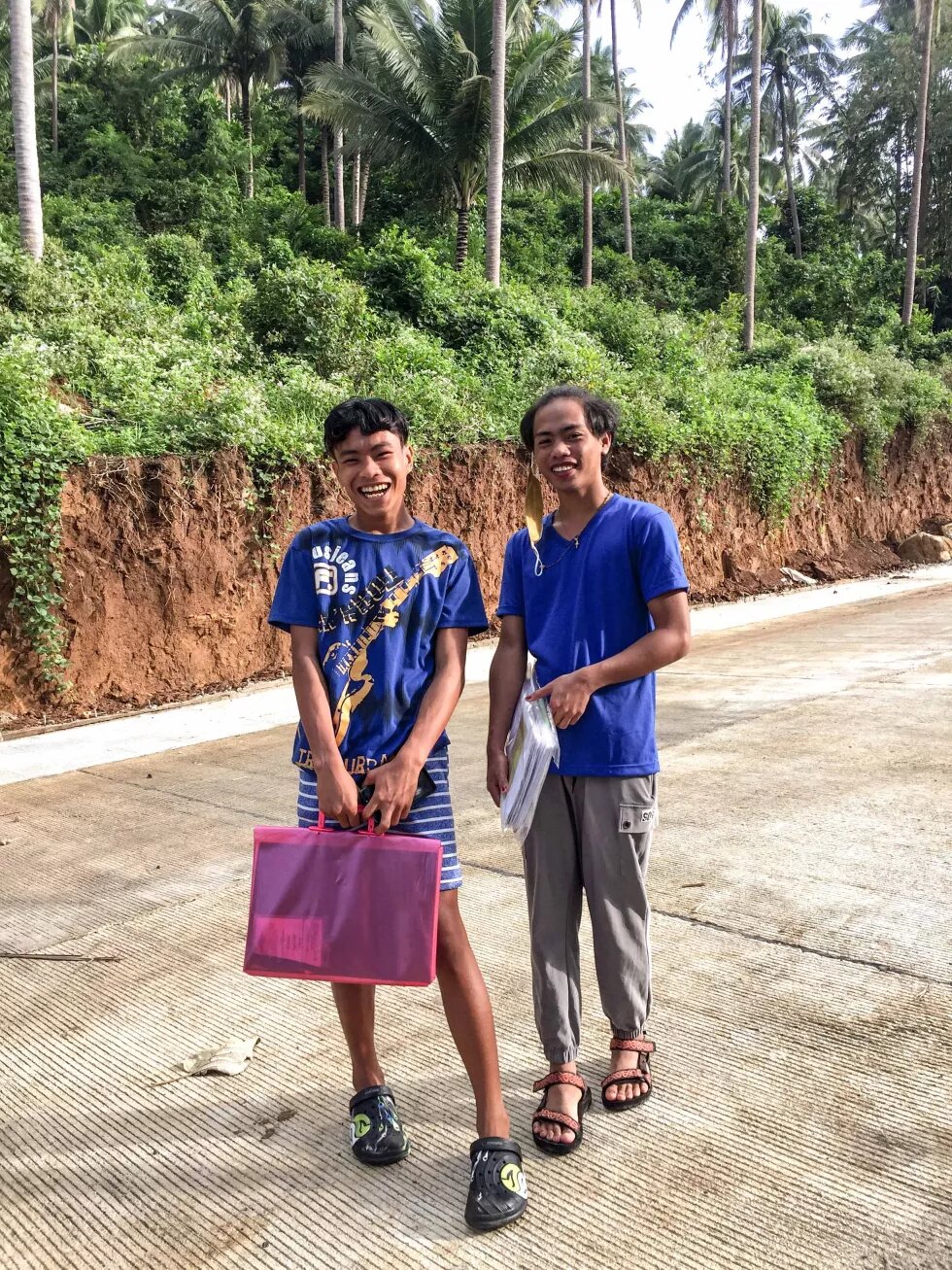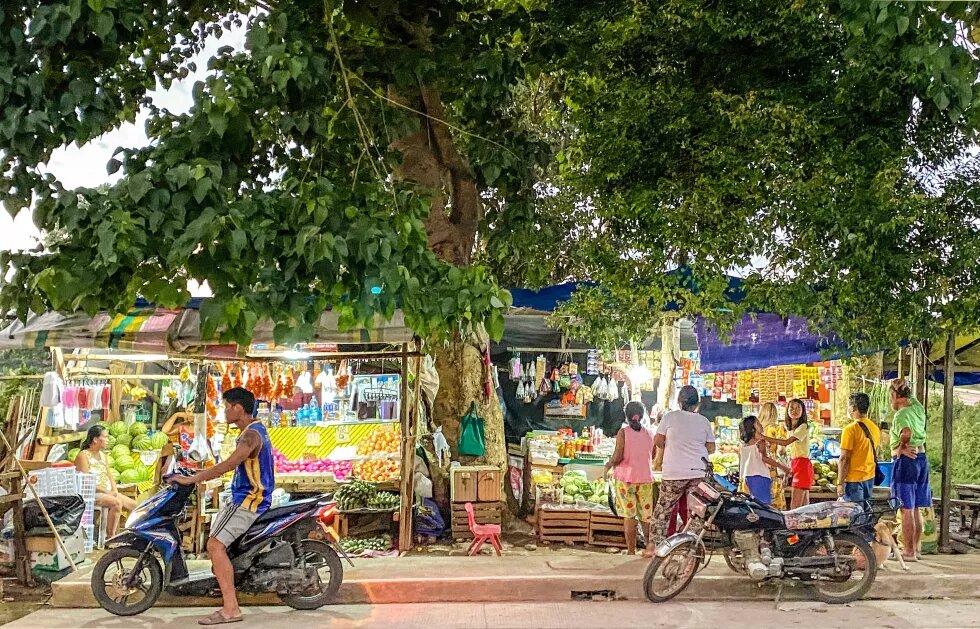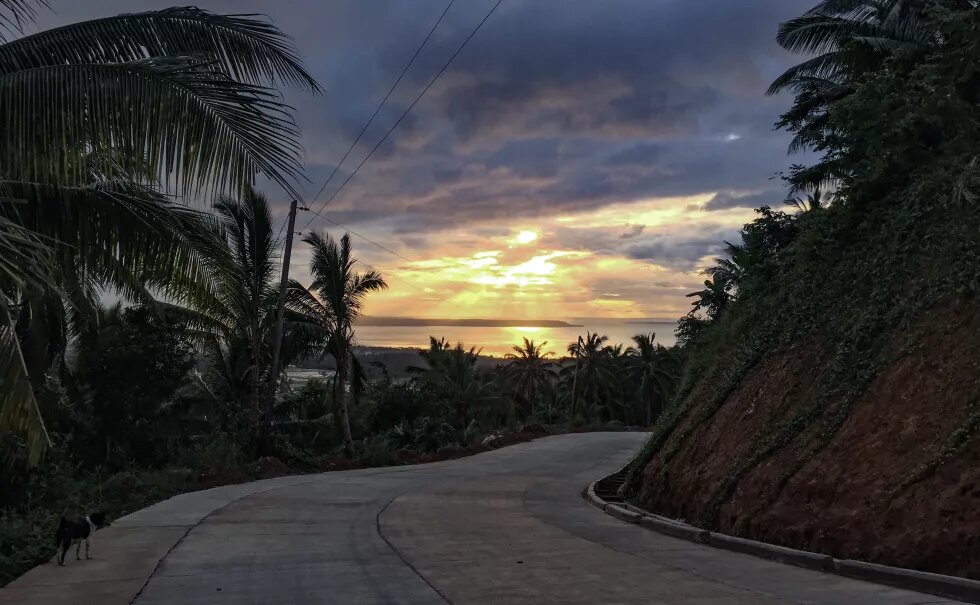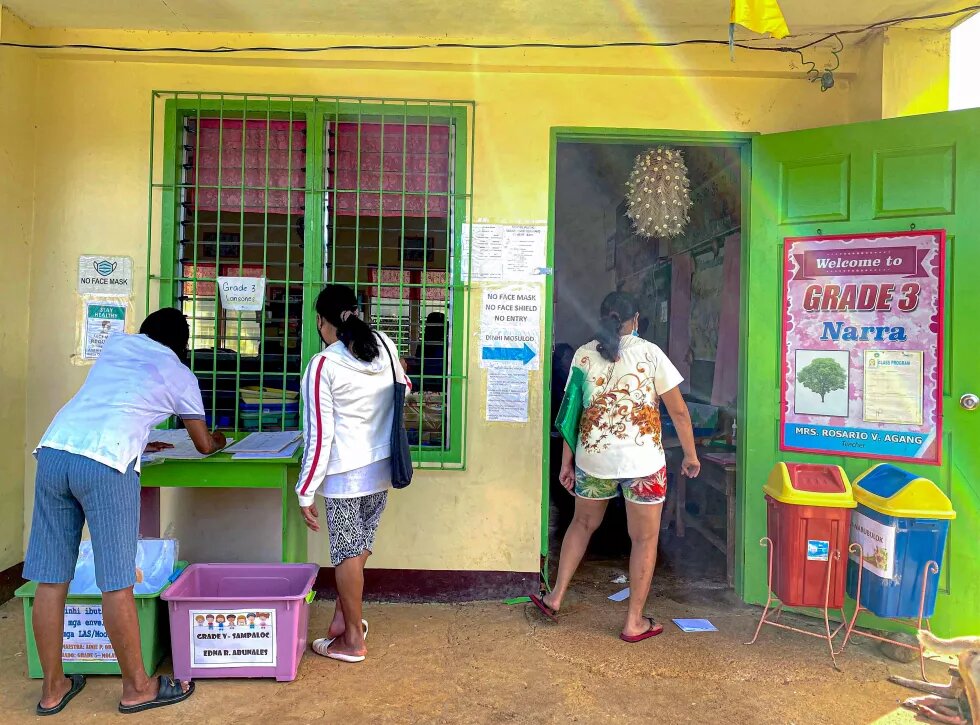
Almost two years since the Philippines implemented lockdown measures to curb COVID-19 infections, some schools in the country have resumed face-to-face classes. In the capital Manila, however, physical classes in school due to recommence in January was suspended because of surging cases in late 2021. Most are the Omicron variant, which now brings total cases to over three million and more than 50,000 deaths.
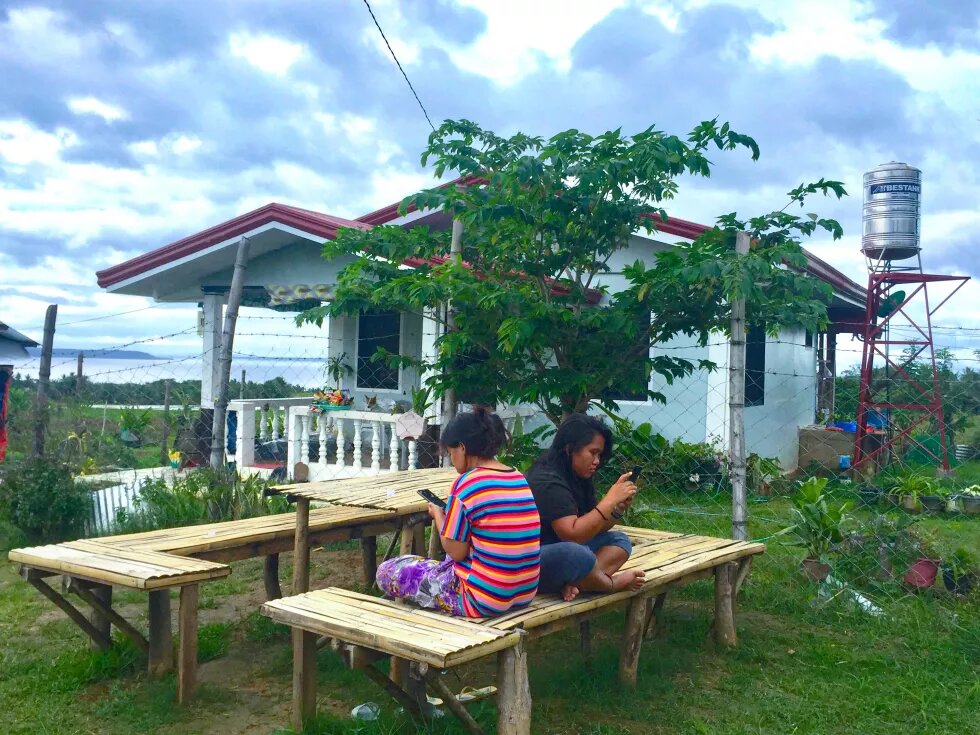
Since the outbreak in 2020, government education agencies in the country implemented alternative learning modes to cope with the situation. The implementation was far from easy and exacerbated gaps in the country’s access to education. Teachers and parents have to deal with internet connectivity issues coupled with socioeconomic vulnerabilities.
In Talustusan, a community of over 500 families in the province of Biliran in Eastern Visayas region, teachers, students and parents are dealing with issues ranging from internet connectivity, power outages, climate crisis, and financial capacity. Take-home modules containing exercises pose a greater challenge for parents who have never finished grade school. Nevertheless, communities have managed to survive through two academic years but teachers and parents are worried whether this mode of teaching has actually helped their children’s education.
|
|
|
|
|
|
|
|||
|
|
|
|
|
|
|
|
|
__
Photo Essay - Limited Connectivity and Other Obstacles: 2 Years of School in Rural Philippines
All photos are under Creative Commons
Attribution-NonCommercial-NoDerivatives 4.0 International (CC-BY-NC-ND 4.0)
Author: Daniel Abunales
Published by: Heinrich Böll Stiftung Southeast Asia on 17 February 2022
Permanent Link: <https://th.boell.org/en/2022/02/17/talustusan-biliran-covid-19>
